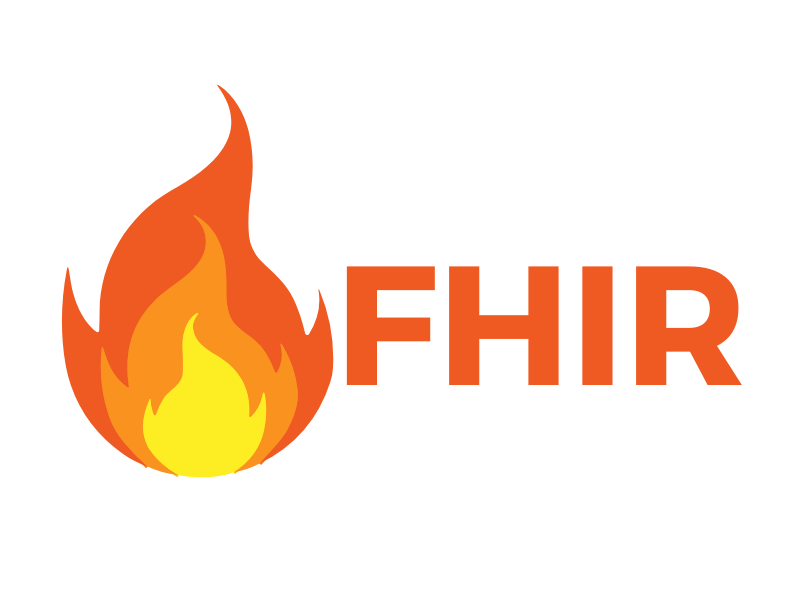Ensuring optimal patient care delivery encompasses aspects beyond clinical interventions. The need for effective communication and seamless exchange of electronic health data is equally critical, for it facilitates coordinated care while enhancing treatment outcomes. With the Fast Healthcare Interoperability Resources (FHIR) standard, it becomes easier for healthcare providers to exchange health data across different EMR and EHR systems.
Let’s explore the importance of FHIR standards in simple terms.
Table of Contents

What Is the FHIR Standard?
The FHIR standard is a standard for healthcare data exchange that can be implemented using the REST API. It allows existing web apps and computer systems in healthcare to communicate with one another, making them interoperable. Developed by the nonprofit organization Health Level Seven International, FHIR responds to the present-day challenges of exchanging information in an industry that handles increasingly complex and voluminous data.
Why Is the FHIR Interoperability Standard Important in Healthcare?
Interoperability in healthcare doesn’t only mean connecting two systems. Dr. Russell Leftwich explains in an InterSystems Learning Services YouTube video on FHIR that interoperability means “being in one place and seeing all data for an individual or population from that one place in real-time. It’s the way everything else on the Internet works.”
In the 1980s, interoperability in healthcare became an important issue as health organizations started adopting different computer systems. This was when Health Level Seven International was formed to create data exchange standards. Today, more devices and places other than hospitals contain healthcare data in systems that need to exchange information with one another. You have laboratories, pharmacies, genomic sequencing labs, and patients who create or require access to complex data.
Data has exponentially grown over time and continues to increase. According to Dr. Leftwich, what has stayed the same is the number of facts that an individual can handle. We can only solve that problem by making those healthcare facts computable as online, coded data. This was why HL7, led by Grahame Grieve as the product director, developed the FHIR healthcare standard.

How Does FHIR Work
To understand how FHIR works, we need to understand the following terms:
Resource
HL7’s FHIR documentation defines FHIR’s basic building block as the Resource. Resources are data elements such as medication, care plan, family history, and patient demographics. FHIR builds a base set of resources that, when used by themselves or in combination, satisfy common use cases.
Profile
FHIR profiles are customizations of the Resources for a particular use case. For example, to create a Procedure profile, you need the following Resources: patient, condition, encounter, diagnostic reports, and practitioner. The FHIR profile tells us the relationship of various data or resources, allowing different systems to understand the meaning of the data they exchange with one another.
Extension
Extensions are FHIR elements that are missing from the FHIR base specification. FHR is simple and easily implemented because it does not include all possible data elements in existing systems. Creating extensions allows you to add data elements for a specific use case that are not part of the FHR resource. These extensions should be published in a publicly accessible server for anyone who needs it to understand what it means.
Implementation guide
The implementation guide is a FHIR resource that specifies the rules for specific use cases. It includes resources, profiles, and human-readable documentation and examples published to a URL that anyone can access. Your application can be validated against this implementation guide.

FHIR Standards Benefits
The FHIR standard offers numerous advantages, including:
Improves interoperability
Because of FHIR, different systems from different vendors can exchange data without transforming the data. For example, electronic health records (EHR) can exchange data with imaging laboratories and pharmacies while maintaining data integrity. This is because you use the same profile, and the FHIR data is machine-readable and computable.
Moreover, FHIR profiles are shared in an FHIR terminology server, which allows developers to access the same value sets and terminology. If you’re developing an app for treating a particular disease, you can create that value set and store it in the FHIR terminology server. Other developers can reference your value set without downloading it to each system.
Facilitates healthcare innovation
FHIR standards have lowered the barrier to entry for healthcare developers and innovators. Using FHIR, they can create new apps and solutions to improve healthcare delivery. For example, they can create mobile health apps that allow patients to monitor their vital signs, track medications, and communicate with healthcare providers or telemedicine platforms for virtual consultations. These apps and platforms can use FHIR APIs to integrate with EHRs and other healthcare systems.
Enhances patient engagement
HIPAA law requires that individual healthcare information should be accessible to authorized people whenever they need it. FHIR enables the development of secure apps and portals that display a person’s health data. With these apps and portals, you have more control over your health information and can communicate better with your healthcare team.
Impact of FHIR on Healthcare Data Exchange
FHIR is a game-changing innovation that makes health data exchange more efficient and accurate than ever. As Dr. Leftwich says, prior HL7 standards were published as documents and had to be read and interpreted. By contrast, the FHIR specification is machine-readable and downloadable to your system from the FHIR website, making it much easier to exchange data between different systems.
Following this standard enables software engineers to develop and implement apps rapidly according to their use case. For instance, they can create customized EHRs that interface with specific laboratory systems for their organization. More importantly, FHIR has made healthcare innovation, patient engagement, and interoperability more accessible.







